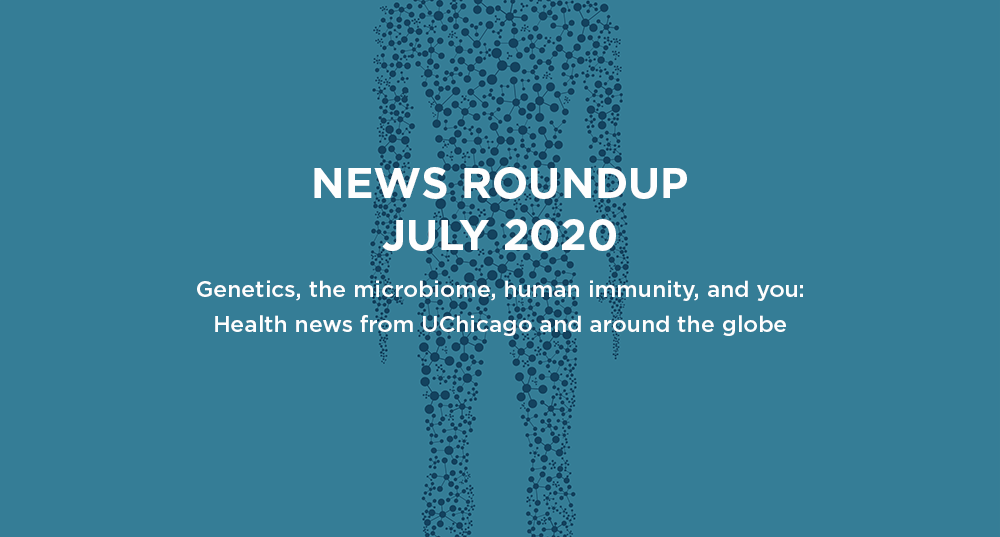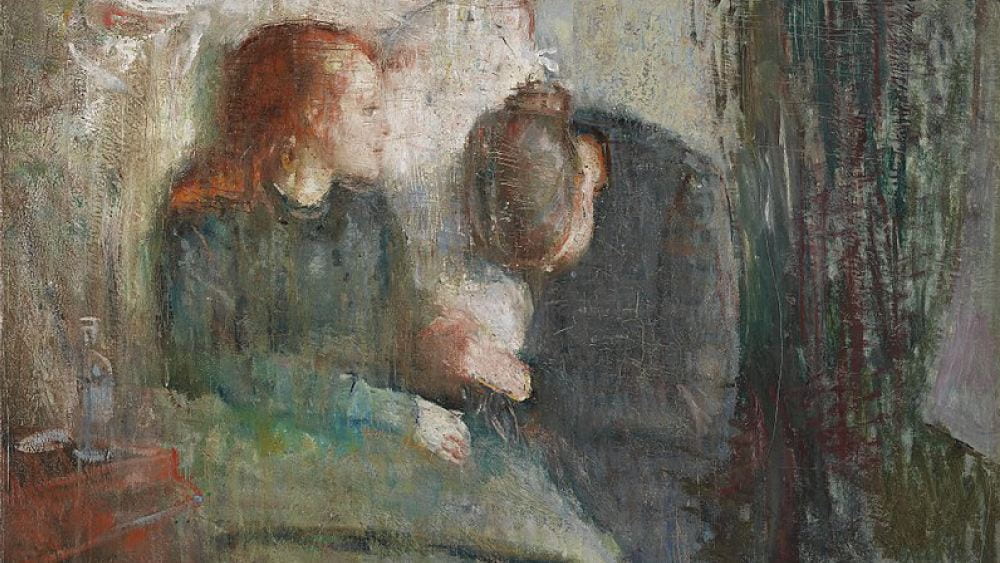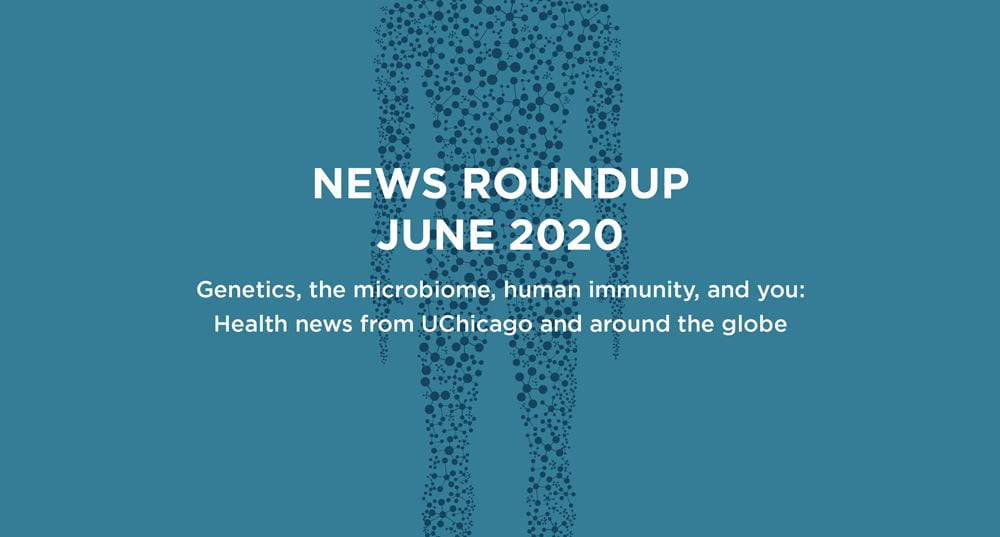
Aug 17, 2020 | COVID-19, Immunology
by Elise Wachspress
All systems depend on moving information. Whether you are running a household, a company, or a country, relaying knowledge is critical.
As institutions grow in size and complexity, new forms of communications become ever more essential. Drums, yodeling, and semaphores have given way to cell towers and the Internet to relay information around our big, curved planet. Complicated systems need network nodes and signaling that transmit knowledge quickly, reliably, and accurately.
Our own bodies also depend on information transfer as well, and thanks to evolution, our biological systems are remarkably well-honed. Millennia of natural selection have left us with internal signaling tuned precisely to deliver the intel our cells need to keep us healthy and functioning.
But, in every system, some new problem always comes along.
This year, it’s COVID. It invades our bodies, commandeers cellular machinery, causes tissue damage, and, most dangerously, hijacks our internal signaling system, invoking a storm of immune agents that fails to kill the virus and instead kills the host—us.
The most straightforward intervention strategy is just to neutralize the interloper: develop a vaccine or a drug that kills off the coronavirus and go back to our normal lives. And many labs around the word, including some at UChicago, are working on that.
But in a situation as potentially cataclysmic as this pandemic, it behooves us to work in tandem on multiple strategies. What if we took a host-centric approach and figured out how to regain control of our internal signaling system so the virus loses the power to cause serious damage?
A huge group of UChicago scientists and clinicians, in areas from cancer to chemistry to pulmonology and more, are already working together on this, and investigators from Northwestern and the University of Illinois at Chicago have now joined them. They are using their vast collective knowledge of cell signaling pathways—the movement of information from one internal “cell tower” to another—and molecular therapies to figure out how to keep the immune system on track after coronavirus infection.
The team’s is a three-step approach. First, survey compounds known to be active at various points in cell signaling, identify those with antiviral potency, and test them on lung cancer cells. This will help them identify “nodes” where the hijacking is happening so they can shore up these weak links in the signaling pathway. This is possible thanks to some fairly new technological approaches known collectively as “omics”: transcriptomics, proteomics, metabolomics. Together, these can show how the cell is responding to environmental stresses: which parts of the cell’s genome are activated, what proteins it’s making (important because viruses need LOTS of proteins to replicate), and what other byproducts are formed.
The next step is to see how these “omics” compare with those in cells actually infected with the coronavirus. To do so, researchers will take cells from healthy patients into the lab and inject them with the virus. The differences and similarities they see between the “omics” of the cancer cells and the COVID cells will tell them a lot about how to proceed. These infected cells will also serve as a substrate for testing the compounds identified earlier, thus sussing out the most promising candidates for drug development.
These first two projects are only possible because the team has access to UChicago’s Howard T. Ricketts Laboratory, one of 13 regional biocontainment facilities in the US, located at Argonne National Laboratory, also managed by UChicago. (As you might imagine, the demand for services at Ricketts has multiplied exponentially over the past few months.)
Once the team has identified compounds active in calming relevant parts of the signaling pathways, they will start testing various drug cocktails in live organisms, at first mouse models. The team will see which can tamp down the “cytokine storm,” the signature, out-of-control immune response to COVID-19 that damages the lungs, and, we are learning, often cardiac and brain tissue as well.
The team started the research with a seed grant from the University’s Big Ideas Generator program, set up specifically for the kind of promising, “out-of-the-box” ideas rarely funded by the government. Now most of the team are borrowing resources from other projects in their individual laboratories to continue the momentum. The landscape is full of researchers desperate for support to see if their approaches can help stop this pandemic, and even once grants are won, getting the money rolled out is slow. So Marsha Rosner, PhD, the leader of this strike force, is hoping for early help from a philanthropic “angel.”
What is unusual about this team—its size, coherent integration, access to unusual laboratory resources, and the infrastructure to make eventual clinical testing possible—suggests they have a better shot at success than most.
The payoffs may be large. Because they are looking closely at the host—our own cells—rather than this specific virus, what this team learns may eventually help protect us from other respiratory viruses. So when the next new problem comes along, we’ll have a better understanding of our immune system and be much better prepared to keep the deaths from mounting.
Elise Wachspress is a senior communications strategist for the University of Chicago Medicine & Biological Sciences Development office.

Jul 31, 2020 | COVID-19, Genetics, News Roundup
Do plants hold a key for understanding our own immune systems? Researchers identify plant genes that select which microbes get to live inside leaves, safeguarding plant health. (Futurity)
Historical studies of infants’ poop suggest their microbiomes are more malleable than adults’. Research suggests probiotics may have the power to improve the health of those under two years. (The Scientist)
Are worldwide increases in inflammatory bowel disease worldwide caused by mothers passing on their microbiomes to their children? Researchers are finding gut microbiota alterations in IBD moms persists during pregnancy and are reflected in the microbiota of their infants’ stool, potentially changing their adaptive immune systems. (Gut Microbiota for Health)
Researchers are identifying some factors to predict who becomes sickest with COVID-19 infections. High levels of cytokine alpha interferon and inflammasome activation increase severity, but high levels of cytokine “growth factors” is a positive sign. (MedicalXpress)
Do those with IBD have more reason to worry about COVID-19? Data so far suggest not. UChicago’s David Rubin, MD, suggests IBD patients on immunosuppressants continue their medications but maintain a social distance regimen. (Health Central)

Jul 10, 2020 | COVID-19, Immunology
by Elise Wachspress with Peter Wang
Before COVID, before the Spanish flu, there was another highly infectious pulmonary disease that also changed entire countries and societies.
Tuberculosis, however, has been with us since antiquity. Like COVID, TB travels from person to person in droplets or aerosols. Caused by a mycobacterium, the disease was the most common cause of death in the nineteenth century. Populations who lived or worked in very close quarters—like migrants traveling in the holds of ships or poor people stacked in urban tenements—were the most vulnerable. But “consumption” was also somehow considered “romantic,” a wasting disease that also felled many writers and artists, the young John Keats famously among them. In fact, Edvard Munch’s “Sick Child,” above, documents his own sister dying of TB at age 15.
The advent of antibiotics made a big impact in curing the disease. But the mycobacteria that cause TB have evolved resistance, and poverty is still endemic around the world. The sad fact is that the disease still kills a million and a half people every year. That’s why the Bill and Melinda Gates Foundation is interested in TB research. One of the scientists whose work they support is UChicago’s Luis Barreiro, PhD.
Before antibiotics, French scientists Albert Calmette and Camille Guerin had already developed a vaccine against TB. In a way, it was similar to how the smallpox vaccine was developed from the much-less-virulent cowpox: Calmette and Guerin developed a vaccine for TB from a much less lethal bacterium also found in cows.
But BCG works unlike other vaccines. Most train the adaptive immune system, the specialized, “intelligent” commandoes that home in on very specific molecular targets. BCG also seems to affect the body’s innate immune system, a generalized assembly of cellular fighters once thought to be pretty untrainable. One clue is that BCG given in infancy or early childhood seems to reduce vulnerability to a whole range of diseases, not just TB.
And people now suspect that COVID-19 may be one of these.
Barreiro was working on TB and BCG long before the coronavirus reared its ugly head. He is developing the evidence that BCG ends up in the bone marrow, where it changes the epigenetics—the chemical “decorations” that hang off the basic structures of DNA and RNA—of the stem cells developing there. It creates something like a boot camp where newly emerging macrophages—the infantry grunts that rush to the front as part of the innate immune system—become better fighters against multiple diseases at once.
So the Gates Foundation is funding Barreiro’s research to understand whether this mechanism works in humans as it does in mouse models. In low-to-middle-income countries with high rates of TB and other infections, BCG is still given in infancy or early childhood and is known to reduce neonatal mortality for all causes. The Gates Foundation, focused on reducing TB in those countries, wants to understand how BCG works and if that knowledge can help scientists develop an even better vaccine.
One of Barreiro’s special talents in this quest is his abilities with “single-cell” technologies, because you can’t really characterize how different macrophages are working by looking at an “average” of their epigenetics and the “average” interactions they have with intruders. Barreiro uses automated processes that can look at individual cells—a lot of them, very quickly—to generate a fine-grained picture of how BCG vaccination fosters epigenetic variations in certain macrophages that allow these cells to fight many diseases.
Maybe even COVID.
As several recent journals have reported, there is growing evidence that countries with national BCG childhood vaccination programs have a much lower incidence of severe disease and death from COVID. So by developing an understanding of how BCG works, Barreiro and his team may generate important clues in protecting people from our latest scourge.
Science can’t, shouldn’t, won’t sit still and wait to address the next crisis. The work on TB (done centuries ago) and single-cell technologies (perfected over the past few years) may provide the answers to a crisis we didn’t even know we’d have to face.
Elise Wachspress is a senior communications strategist for the University of Chicago Medicine & Biological Sciences Development office. Peter Wang is a second-year undergraduate student in The College.

Jul 2, 2020 | COVID-19, Vaccination
By Elise Wachspress with Tinyan Dada
If you haven’t been infected yet, congratulations, you’ve made it this far.
We’ve streamlined our grocery store visits, maintained a six-foot distance at all times, even bought or made patterned, reusable masks for the family. We have a COVID routine, but we’re still waiting for the magic switch that will make everything normal again.
Thousands of scientists and technicians around the world are working to develop vaccines—substances that train our immune cells to attack particular pathogens—to keep us from getting COVID-19. Scientists continue to find multiple strains of the SARS-CoV2 virus circulating in various populations; it is becoming clear we may need multiple vaccines. And how long will these protect us? Measles inoculation works pretty much forever, but that is a rarity.
Sadly, even the most effective vaccination programs won’t work for everyone: the very young, the old, and especially those with impaired immune systems, for whom they may even cause disease. Will these people have to live forever in a COVID-19 bubble?
Maybe not. If we can establish herd immunity—where enough of the population is resistant to the disease—all of us might be able to resume a normal life.
But how many is “enough”? In an article in Immunity last month, UChicago geneticist Luis B Barreiro, PhD and grad student Haley E Randolph lay out the many parameters affecting herd immunity. In the case of this novel coronavirus, potentially influenced by countless unknowns—social structure, population density and age, even the genetic vulnerabilities of particular ethnic groups—assessing the potential for herd immunity becomes particularly uncertain and complicated.
The starting point, says Barreiro and Randolph, is to identify the average number of new cases each infected person might cause. In a completely susceptible population, where no one has experienced the virus before, this average is designated as R0. But once people start becoming resistant—either by getting the disease or through a vaccine—the effective reproduction rate, Re, starts to go down. The goal of vaccination programs is to get Re down below one, meaning more people have the disease than are transmitting it, and the disease curve begins to arc toward zero.
In the case of COVID-19, R0 has so far been estimated across different populations to be anywhere from around two to nearly six. (All of these R0 estimates were generated of course, without anyone understanding whether or how many people without symptoms can transmit the disease.)
So, Barreiro and Randolph suggest, suppose we take an average of the average—this totally new pathogen is forcing everyone to make a lot of guesses—and settle on an R0 of three. Mathematically, that would mean that incidence of the infection would begin to decline when about 67 percent of the population was resistant, and we would have a start—no promises!—toward herd immunity.
Complicating these models further are super-spreader events, like when one person singing in a church choir inadvertently infected at least 52 people with the coronavirus. We know from experience with MERS or even measles that one person or a tiny group can sometimes drive an inordinate number of infections. We don’t yet know how common these events are with COVID-19, although we have now learned that forcefully expelled droplets are a major mode of transmission, so taking precautions like wearing a mask, singing only at home, or even speaking more softly can ostensibly reduce R0.
Another important unknown is how long antibodies to the coronavirus might last. A year? Two? Because this coronavirus is so new, we have little idea how long the resistance we build up—either from having the disease or getting a vaccine—might last. Either way, protecting the vulnerable will depend on maintaining herd immunity over time.
Barreiro and Randolph go on to explain how to assess the infection fatality rate—the proportion of infected people who die of the disease—a metric critical in assessing the cost to society. Without isolation strategies, they project that worldwide deaths could exceed 30 million. Of course, as was the case in Italy, timing is everything: the faster the infection rate builds, the less likely the health care system can care for all the infected, and the more people will die.
In summary, Barreiro and Randolph point out that herd immunity is likely to work in only concert with a viable vaccination strategy, spread broadly throughout the population. Sweden’s coronavirus strategy involved keeping restaurants and businesses open, hoping that if less vulnerable members of the population interacted out in the community, they would generate some degree of herd immunity. So far, only around six percent of Swedes have developed COVID-19 antibodies, leaving the rest of the population at risk for serious illness and death and Swedes persona non grata visitors to other European countries.
So, in the short term, we continue to embrace our COVID routine. It is not much fun, but it may save our lives and the lives of others.
Tinyan Dada is a second-year undergraduate student at UChicago.

Jul 1, 2020 | COVID-19, Microbiome, News Roundup
Local EMT likely the world’s first double lung transplant recipient to survive COVID-19 via convalescent plasma. It was likely the only option to beat the disease for this young cystic fibrosis survivor, who received both the transplant and the plasma at UChicago Medicine. (Chicago Tribune)
UChicago will help with an experimental national vaccine trial for COVID-19. The study, spearheaded locally by the University of Illinois at Chicago, aims to test at least 1,000 people here. (Chicago Sun-Times)
The US is making progress on a universal flu vaccine. COVID-19 raises the stakes for fighting another infectious viral respiratory disease. (Axios)
Immune cells and noncancerous neurons can drive the growth of brain tumors in neurofibromatosis. Targeting those immune cells can help slow tumor growth. (Futurity)
Certain bacteria in the human gut may be driving a common liver disease. Researchers discovered the strain while studying a Chinese man who became intoxicated—without drinking—after eating high-carbohydrate meals, a condition they call “autobrewery syndrome.” (Science)








